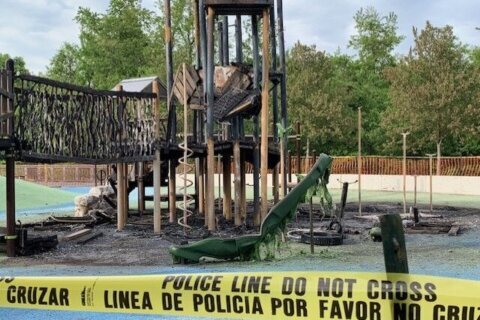Montgomery County Public Schools has announced that 16 more schools will switch to virtual learning starting Thursday and running through Jan. 29.
The move, announced at about 6 p.m. Tuesday, comes amid an ongoing spike in COVID-19 cases and staffing shortages.
The schools are:
- Beall Elementary School
- Briggs Chaney Middle School
- Brookhaven Elementary School
- Clopper Mill Elementary School
- Captain James E. Daly Elementary School
- Gaithersburg Elementary School
- Glenallan Elementary School
- Dr. Martin Luther King, Jr. Middle School
- Lakelands Park Middle School
- Neelsville Middle School
- Paint Branch High School
- RICA – John L. Gildner Regional Institute for Children and Adolescents
- Sargent Shriver Elementary School
- Twinbrook Elementary School
- Watkins Mill Elementary School
- Whetstone Elementary School
Earlier Tuesday, Dr. Monifa McKnight, the interim superintendent of schools, told the Montgomery County Council, sitting as the board of health, that the move would be made. She did not say at the time how many schools would shift to virtual learning or name the schools.
She reiterated her commitment to keeping schools open for in-person instruction and said the school system would only make decisions about virtual learning on a school-by-school basis.
Some parents and teachers have complained of a rocky return to schools after winter break, which came amid a large spike of omicron variant-driven cases across the county and the state.
“Like any educator across America, I will tell you the challenges that are presented by COVID-19 are unlike anything our school system has ever experienced — and I will venture to say any school system has experienced in modern history,” McKnight said. “We’re all first-timers at this.”
This shift comes after Montgomery County Public Schools (MCPS) last week laid out a new approach for determining how and when schools should transition to virtual learning that takes into account five factors, including staff and student absences, unfilled substitute teacher positions, unserved bus routes and COVID-19 case rates.
McKnight said she is committed to keeping kids in school as long as it can be done safely.
Teaching is a “face-to-face enterprise; honestly, there’s no replacement to that,” McKnight said. “And when we do have to replace it to a virtual format, we have to be very thoughtful about what are the consequences of that and how do we best do that, and what makes us say that is necessary at this time.”
Small teams of MCPS administrators, as well as officials at the school level, staff representatives and parent leaders, will review the data and determine whether specific schools should consider a shift to virtual learning, McKnight said.
“Sometimes the story cannot be told through looking at just plain numbers,” McKnight said, adding that factors such as staffing difficulties can also flag a school for possible virtual learning.
“Personalizing that decision is going to be key,” McKnight said.
Earlier this month, MCPS laid out a color-coded system tracking COVID-19 infection rates in schools, which officials used to determine whether schools should shift to virtual learning. Initially, 11 schools saw infection rates of 5% or higher among staff and students over the past 14 days, which triggered a move to virtual learning.
However, the MCPS later abandoned that approach after the Maryland Department of Health recommended against using a single metric as a threshold to shift to virtual.
In her appearance before the council Tuesday, McKnight also made two specific requests. She asked that the county’s Health and Human Services Department take full responsibility for contact tracing in schools, and that the county commit to providing 190,000 rapid COVID-19 test kits to each school every other week — a number that would cover all students and staff, including substitute teachers.
McKnight said school administrators and staff have shouldered the burden of contact tracing throughout the year. “And we’ve heard repeatedly it has taken away from their ability to focus on instruction,” she said. “We have got to get back to school.”








